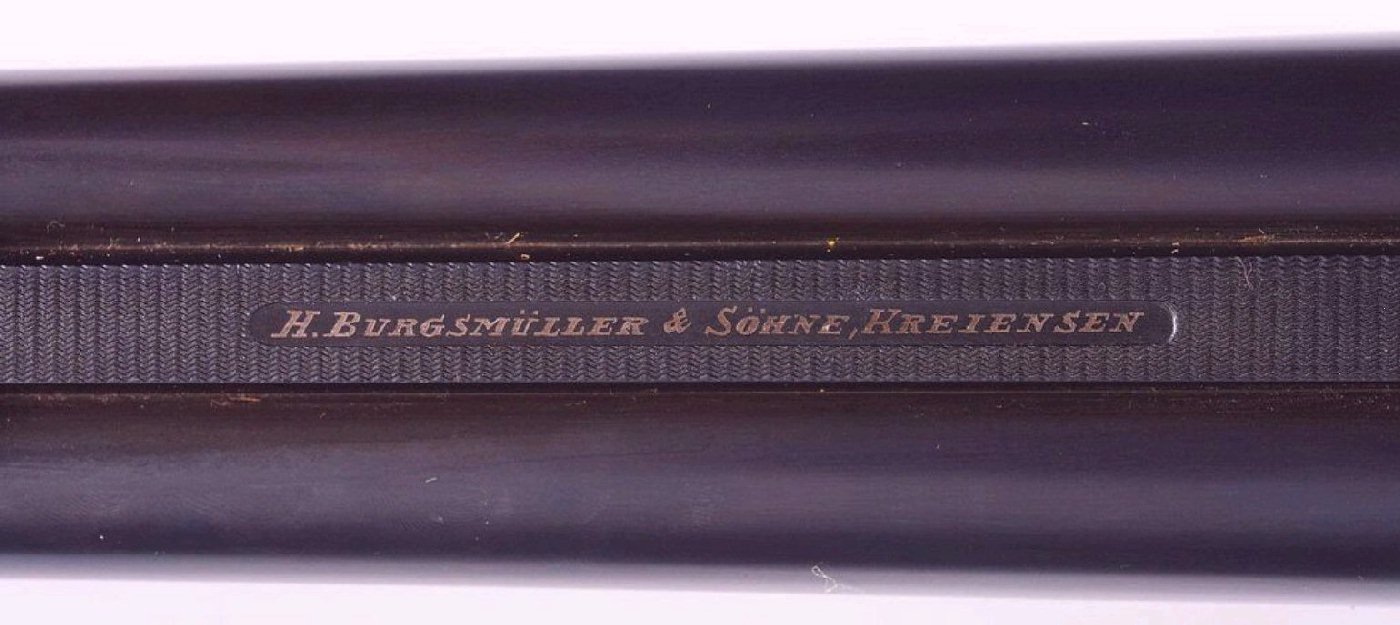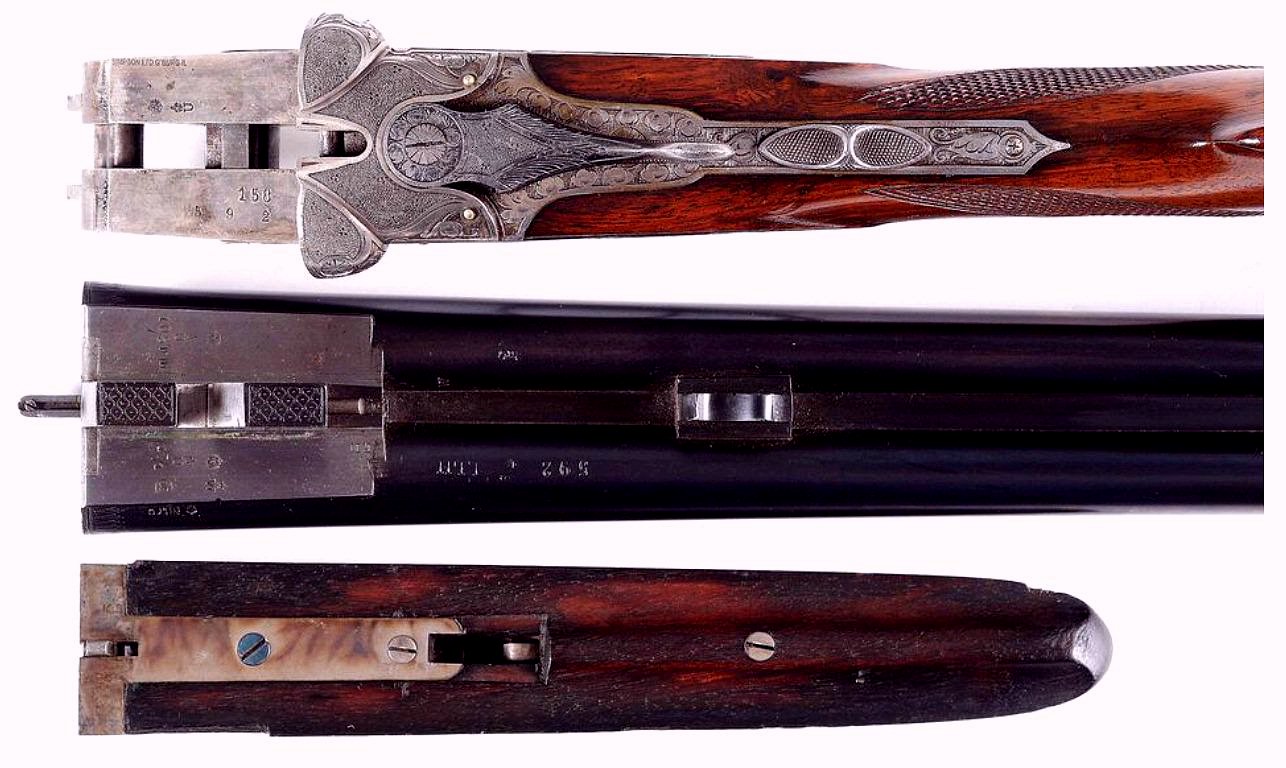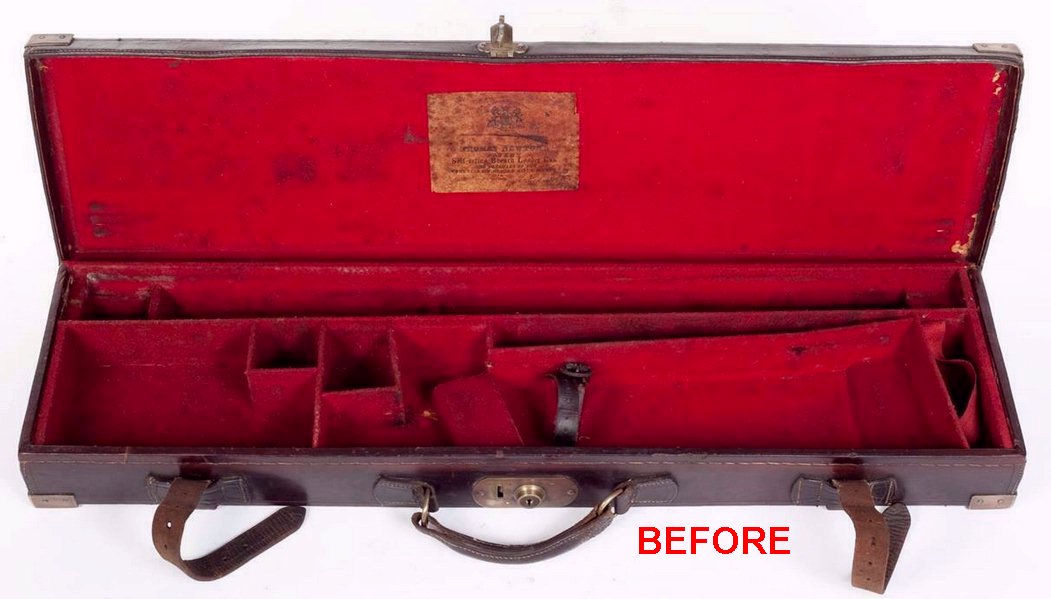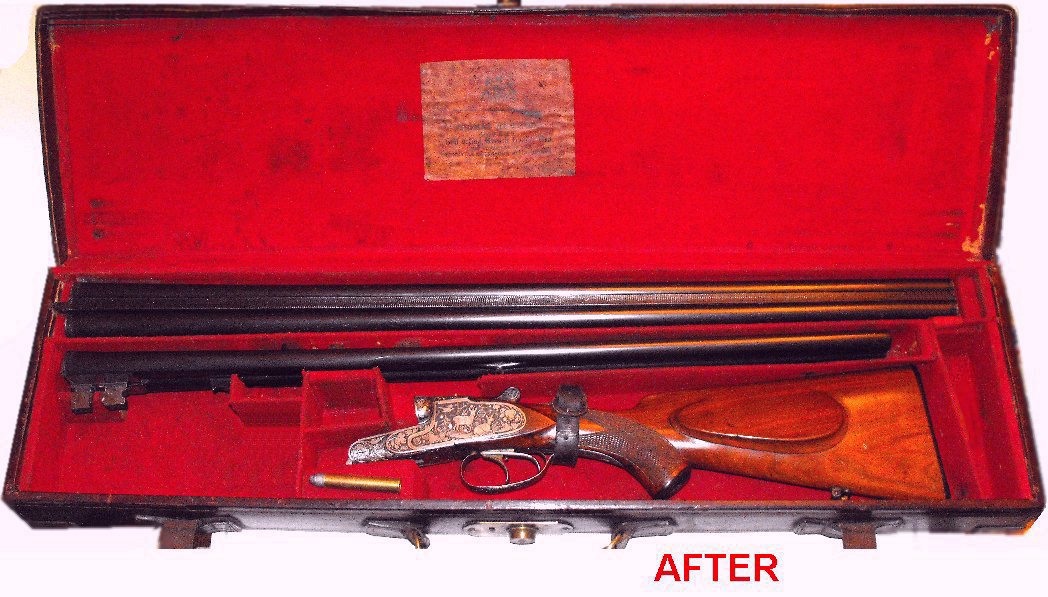Pre-World War I Cape Gun - H. Burgsmuller & Sohne - 01/07/21 10:15 AM
Pre-World War I - Cape Gun - "H. Burgsmuller & Sohne" - with an extra set of 16ga Barrels
Hello All,
Here is another dandy Cape Gun in my collection. Its in 16ga x 11.15x65R. And this one came with an extra set of 16ga. shotgun barrels.
As is typical of European Cape Guns, the rifle barrel is on the right, the shotgun barrel is on the left. English Cape guns are the opposite with the rifle barrel on the left, and the shotgun barrel on the right. Not sure what the reasoning is for this, but that's the way they are all made.
I had an extra vintage take-down case laying around, so I modified it to hold the gun with both barrels, with room for a few accessories.
Although the 11.15x65R is an obsolete old World cartridge, I was able to make a couple of cartridges using brass 410ga shotgun cases. The 410ga brass case dimensions are nearly identical to the original cartridge, except they are a little short by about 2/10 inches. With modest loading they should work just fine. I can't wait to shoot this one, maybe taking it hunting this Fall.
As always, your comments are welcome.
Here's the specs from the auction (with corrections)
(Pre-World War I) 26 - 3/4" rifle/shotgun barrels are gold inlaid "H. Burgsmuller & Sohne Kreiensen" in milled out portion of full length matted rib fitted with one standing leaf rear sight and silver bead front. 29 - 1/2" double shotgun barrels have the same marking in silver on matted concave game rib. Both barrel sets are stamped with imperial German nitro proofs with no date stamp. Shotgun barrels are stamped "16", and rifle barrel with caliber "10.5 mm" (bore) .438 groove diameter straight cartridge 2-1/2" long with base diameter .480, rim diameter .520. Coin finished top lever sidelock action features non-automatic safety, pin type cocking indicators in top of action, crossbolt third fastener, and double triggers (front set). Action is engraved with near full coverage nicely cut and shaded semi relief scrolling acanthus. On lockplates this treatment frames game scenes; left side depicts a roebuck and doe in open meadow, with a flying pheasant in background. Right side has scene of leaping stag with flushing grouse in foreground. There is a puff of smoke obscuring barrel of rifle being fired by hunter in background. Steel trigger guard is engraved with matching scroll. Relatively plain European walnut horn capped pistol grip buttstock measures 13 - 1/2" over ribbed horn buttplate. Stock features right hand shadow line cheekpiece, point pattern checkering, and a sling loop matching that on barrels. Matching splinter forend with inlet schnabel horn tip has Deeley release. Weight: 6 lbs 6 oz. (with either set of barrels in place)



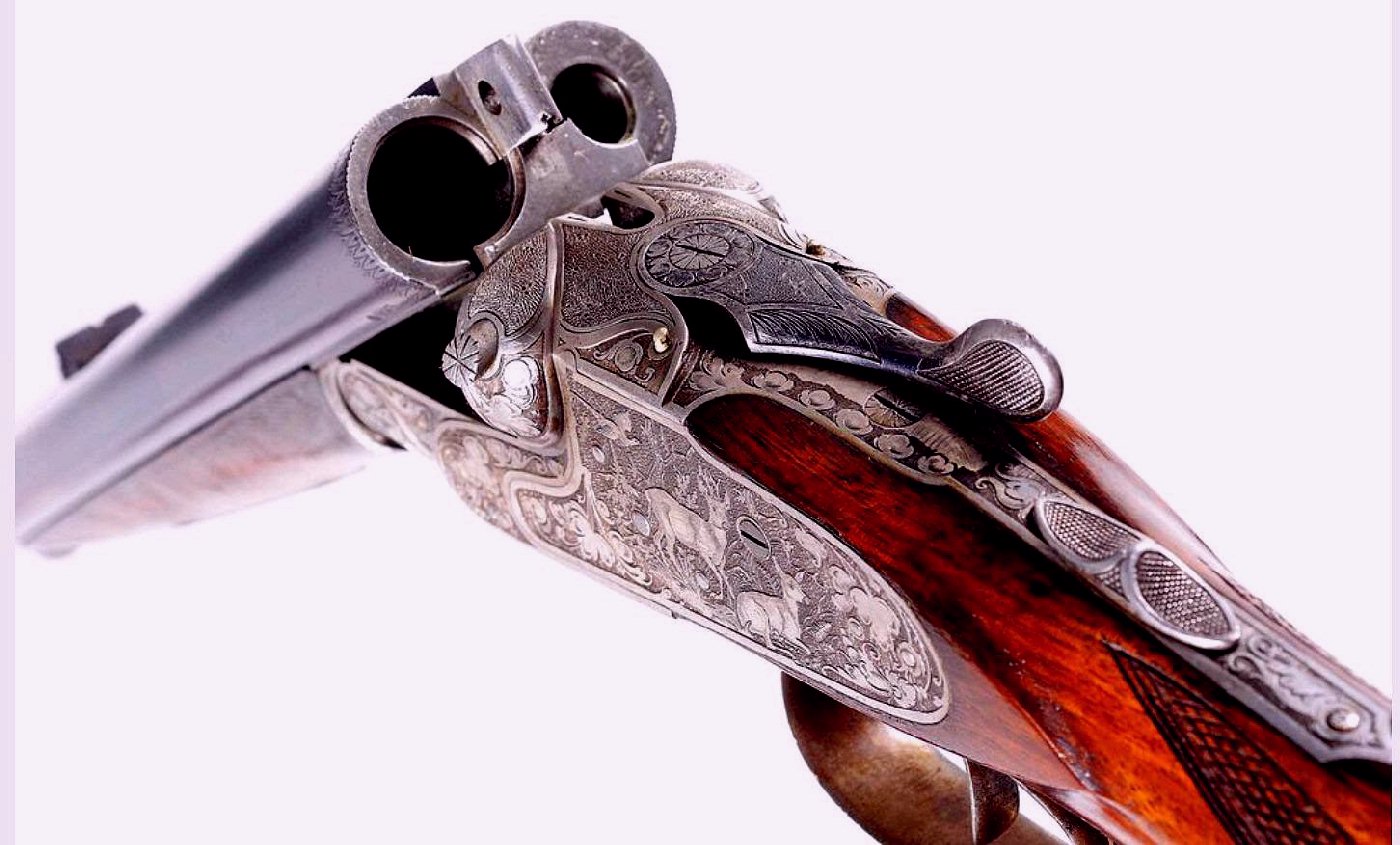
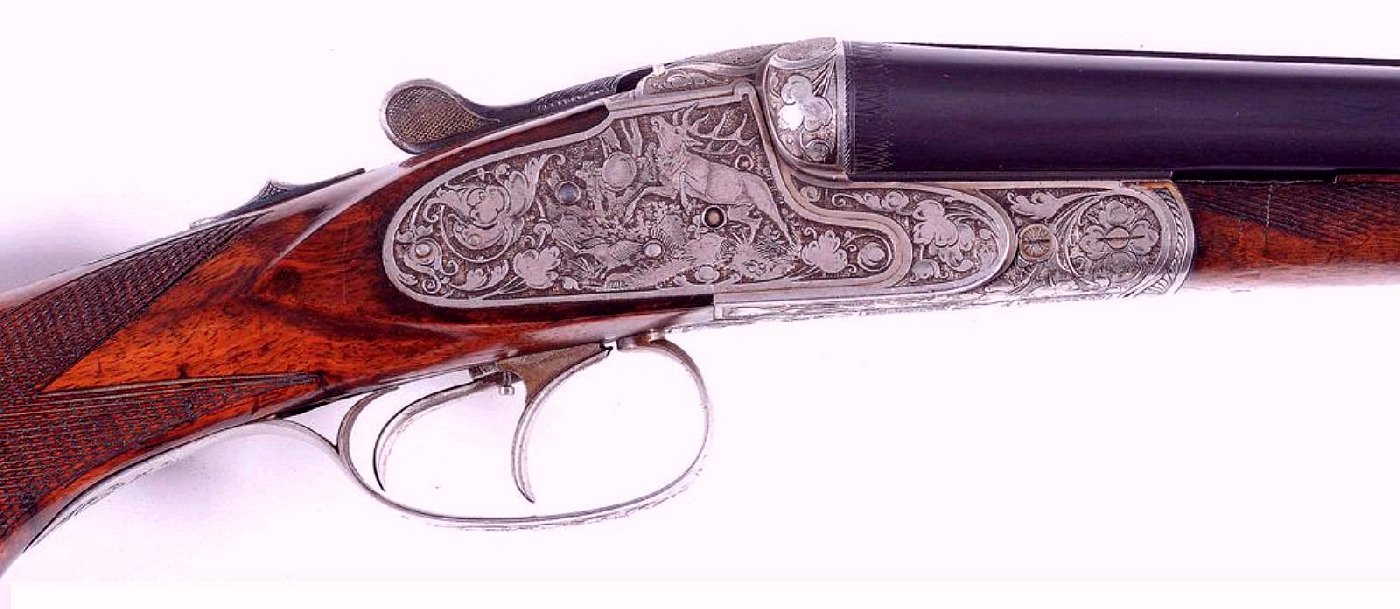
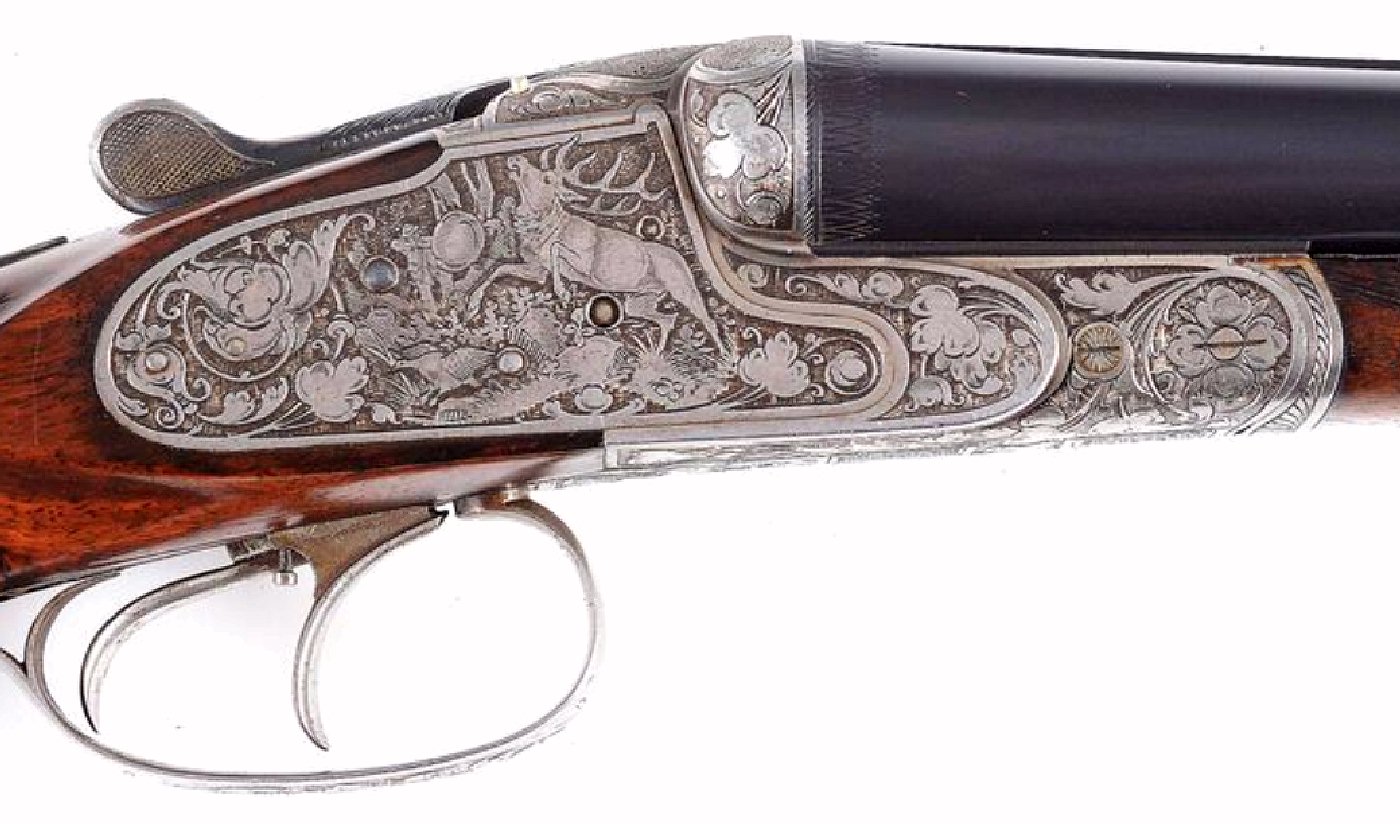


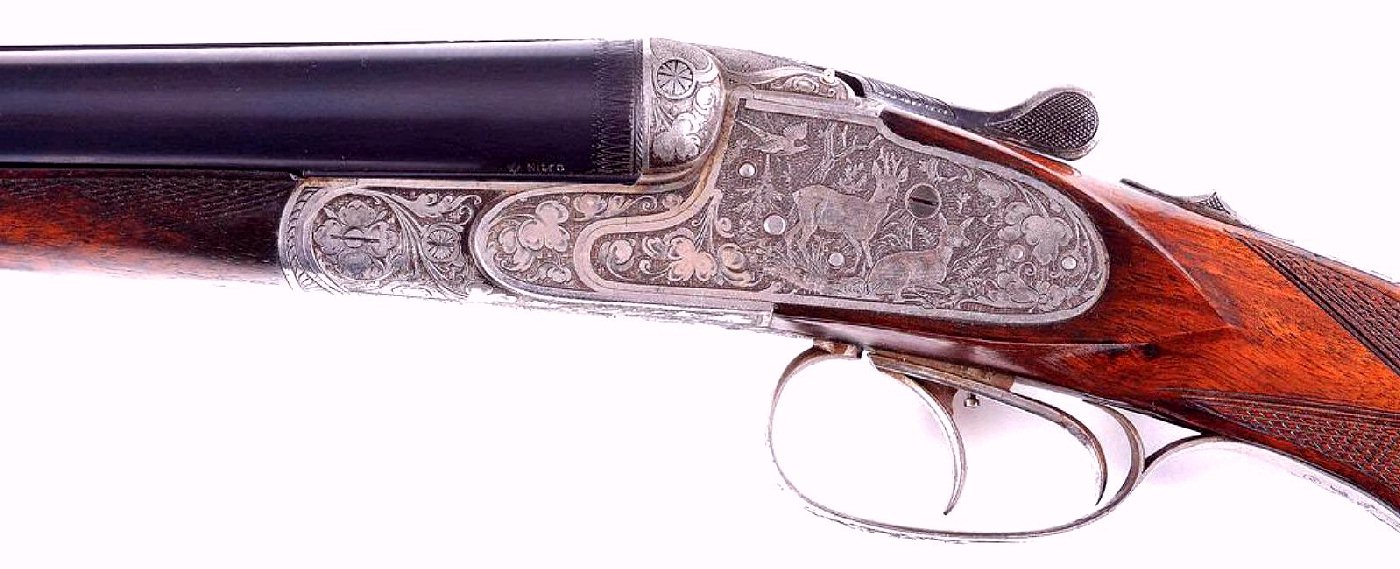
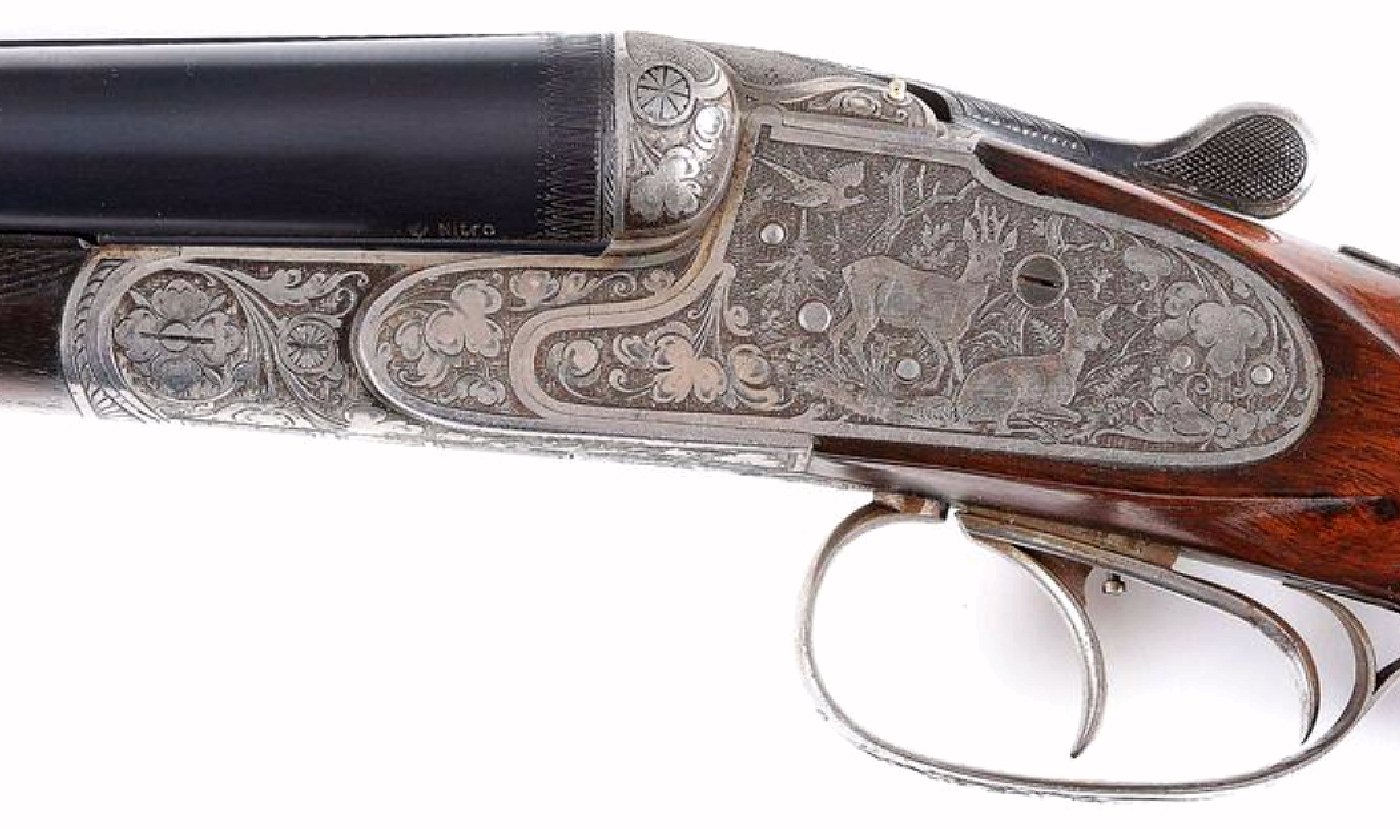
... continued ...
Hello All,
Here is another dandy Cape Gun in my collection. Its in 16ga x 11.15x65R. And this one came with an extra set of 16ga. shotgun barrels.
As is typical of European Cape Guns, the rifle barrel is on the right, the shotgun barrel is on the left. English Cape guns are the opposite with the rifle barrel on the left, and the shotgun barrel on the right. Not sure what the reasoning is for this, but that's the way they are all made.
I had an extra vintage take-down case laying around, so I modified it to hold the gun with both barrels, with room for a few accessories.
Although the 11.15x65R is an obsolete old World cartridge, I was able to make a couple of cartridges using brass 410ga shotgun cases. The 410ga brass case dimensions are nearly identical to the original cartridge, except they are a little short by about 2/10 inches. With modest loading they should work just fine. I can't wait to shoot this one, maybe taking it hunting this Fall.
As always, your comments are welcome.
Here's the specs from the auction (with corrections)
(Pre-World War I) 26 - 3/4" rifle/shotgun barrels are gold inlaid "H. Burgsmuller & Sohne Kreiensen" in milled out portion of full length matted rib fitted with one standing leaf rear sight and silver bead front. 29 - 1/2" double shotgun barrels have the same marking in silver on matted concave game rib. Both barrel sets are stamped with imperial German nitro proofs with no date stamp. Shotgun barrels are stamped "16", and rifle barrel with caliber "10.5 mm" (bore) .438 groove diameter straight cartridge 2-1/2" long with base diameter .480, rim diameter .520. Coin finished top lever sidelock action features non-automatic safety, pin type cocking indicators in top of action, crossbolt third fastener, and double triggers (front set). Action is engraved with near full coverage nicely cut and shaded semi relief scrolling acanthus. On lockplates this treatment frames game scenes; left side depicts a roebuck and doe in open meadow, with a flying pheasant in background. Right side has scene of leaping stag with flushing grouse in foreground. There is a puff of smoke obscuring barrel of rifle being fired by hunter in background. Steel trigger guard is engraved with matching scroll. Relatively plain European walnut horn capped pistol grip buttstock measures 13 - 1/2" over ribbed horn buttplate. Stock features right hand shadow line cheekpiece, point pattern checkering, and a sling loop matching that on barrels. Matching splinter forend with inlet schnabel horn tip has Deeley release. Weight: 6 lbs 6 oz. (with either set of barrels in place)










... continued ...
